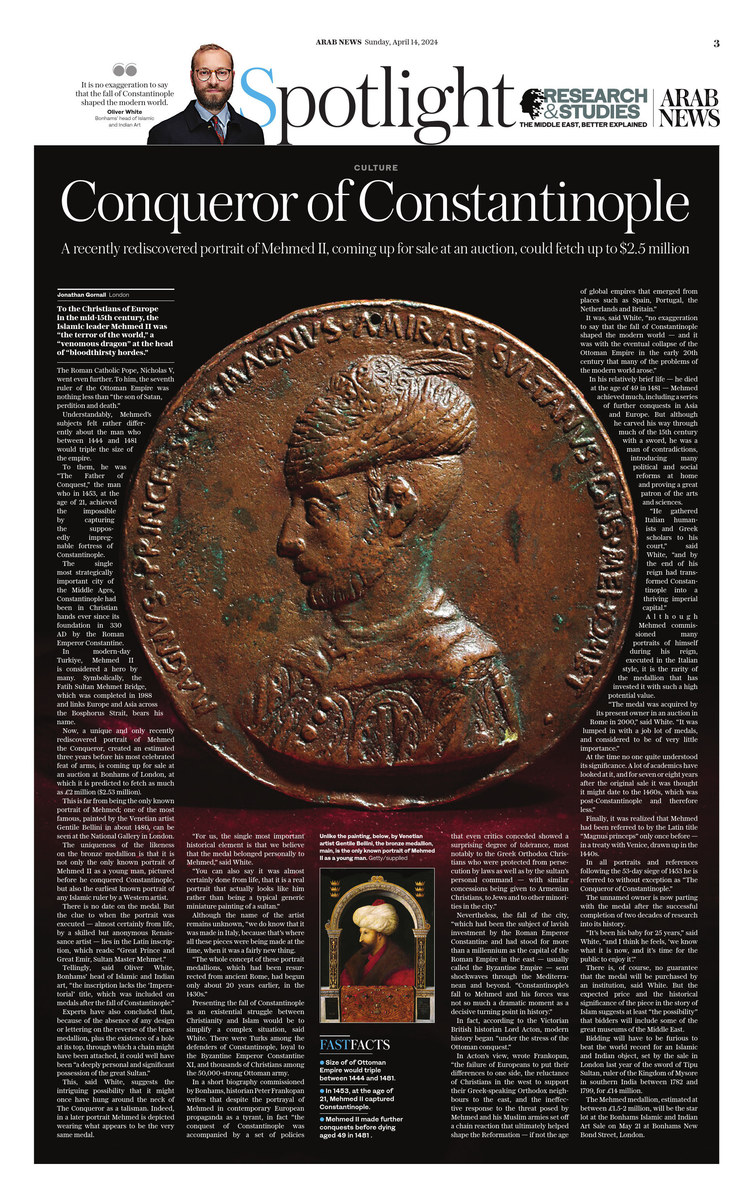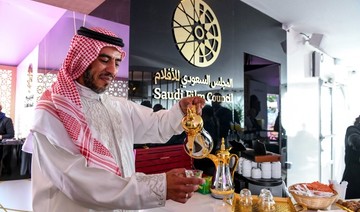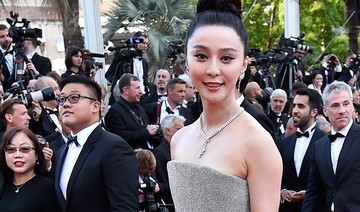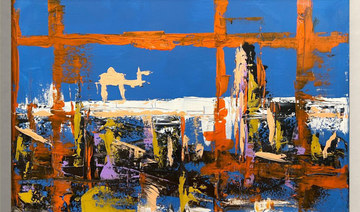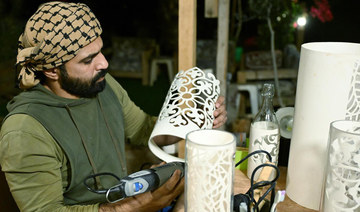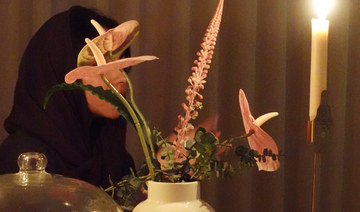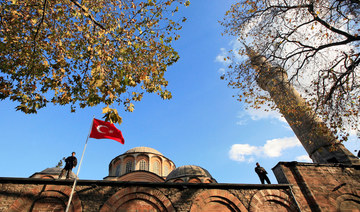CANNES: Spanish Oscar winner Penelope Cruz said Wednesday that putting a firewall between acting and her private life — even when working with husband Javier Bardem — had put a stop to the “torture” of her early years in the industry.
Presenting her new film “Everybody Knows” by Iran’s Asghar Farhadi at Cannes, Cruz told reporters that she and Bardem made a point of not taking their personal life to the set, or their work home with them.
“When I was in my 20s, I thought the more I would torture myself and the more I would stay in character for months, the better the result would be,” Cruz said.
“We (she and Bardem) have very similar ways to work and maybe I did that experiment when I was younger because we both started very young.”
Cruz and Bardem, who many celebrity watchers say have claimed the place vacated by Angelina Jolie and Brad Pitt in the star couple firmament, met on the set of the sexy 1992 Spanish dramedy “Jamon Jamon” when she was still a teenager.
But it took working together on Woody Allen’s “Vicky Cristina Barcelona,” which premiered at Cannes in 2008, to light the romantic spark.
Cruz took home an Academy Award for her supporting role as a hot-tempered artist in the film. She and Bardem, who won the previous year for “No Country for Old Men,” are respectively the first Spanish man and woman to win an acting Oscar.
Bardem, now 49, publicly declared his love for Cruz, 44, at Cannes in 2010 and they married the same year on an island in the Bahamas owned by their friend, US actor Johnny Depp. They have two children together and jealously guard their privacy.
“I have a life and then I have my job and that allows me to jump many times in one day from reality to fiction — I love that beautiful dance back and forth from both dimensions,” Cruz said.
“It would not make your life better, I think, if you used certain things from your private life (on a film set) so the fact that we know each other and trust each other so much only helps.”
Cruz and Bardem have starred in nine films together, including last year’s “Loving Pablo” by Spanish director Fernando Leon de Aranoa, in which Bardem plays infamous Colombian drug lord Pablo Escobar and Cruz a journalist who falls in love with him.
Cruz said that while she enjoyed working on “Everybody Knows” with Bardem, in which they play ex-lovers thrown together decades later, “it’s not something that we plan on doing every two years.”
“No, that will be once in a while if we feel it’s right, like in this case,” she said.
Farhadi, who has frequently worked with his own wife, fellow Iranian director Parisa Bakhtavar, said the couple seemed to maintain a “healthy” distance from the industry.
“I really admired how Penelope and Javier kept fiction and reality, life and work, separate,” he said.
“They are the very symbol of a happy couple and it was a pleasure to see what deep respect they have for each other.”
With the sexism and abuse debate roiling the international film industry and drawing the spotlight at Cannes this year, Cruz and Bardem were asked if they were paid equally for the film. “Yes, actually,” she said.
Cannes Festival participant Penelope Cruz puts ‘torture’ of early work behind her
Cannes Festival participant Penelope Cruz puts ‘torture’ of early work behind her
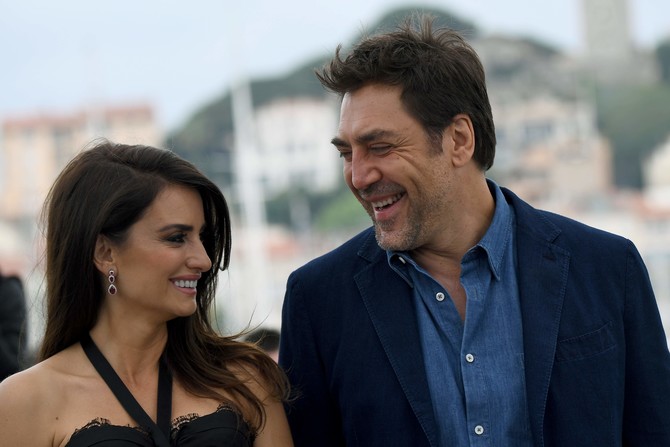
- Cruz is presenting her new film “Everybody Knows” by Iran’s Asghar Farhadi
- Cruz and husband Javier Bardem have starred in nine films together
Israeli artist shuts Venice Biennale exhibit until ‘ceasefire agreement happens’
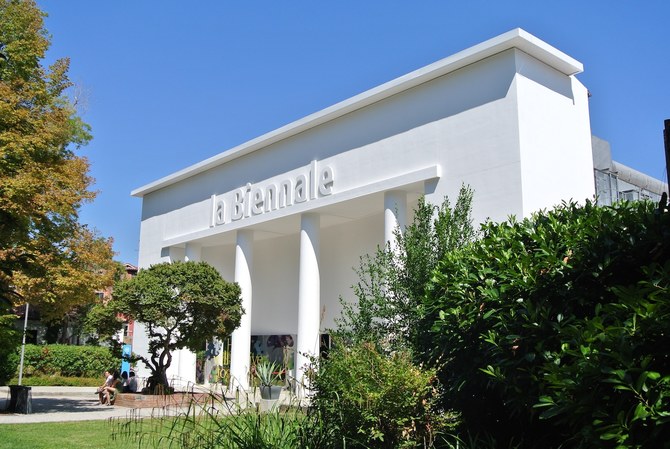
DUBAI: Israeli artist Ruth Patir has shut down her national pavilion at the Venice Art Biennale, saying that she will only reopen it when a “ceasefire agreement happens” between Israel and Hamas.
Patir said in a statement on Instagram: “I feel that the time for art is lost and I need to believe it will return. We (Tamar, Mira and I) have become the news, not the art. And so, if I am given such a remarkable stage, I want to make it count.
“I have therefore decided that the pavilion will only open when the release of hostages and ceasefire agreement happens,” she added. “This has been our decision and we stand by it. I am an artist and educator, I firmly object to cultural boycott, but since I feel there are answers, and I can only do what I can with the space I have, I prefer to raise my voice with those I stand with in their scream, ceasefire now, bring the people back from captivity. We can’t take it anymore.”
In February, thousands of people, including artists, curators and museum directors, signed an online appeal calling for Israel to be excluded from this year’s art fair and accusing the country of “genocide” in Gaza.
“Any official representation of Israel on the international cultural stage is an endorsement of its policies and of the genocide in Gaza,” said the online statement by the Art Not Genocide Alliance (ANGA) collective.
ANGA said the Venice Biennale had previously banned South Africa over its apartheid policy of white minority rule and excluded Russia after its 2022 invasion of Ukraine.
Italian Culture Minister Gennaro Sangiuliano said the appeal was an “unacceptable, as well as shameful ... diktat of those who believe they are the custodians of truth, and with arrogance and hatred, think they can threaten freedom of thought and creative expression.”
Dubbed the “Olympics of the art world,” the Biennale is one of the main events in the international arts calendar. This year’s edition, “Foreigners Everywhere,” is due to host pavilions from 90 countries between April 20 and Nov. 24.
Saudi independent musician takes road less traveled
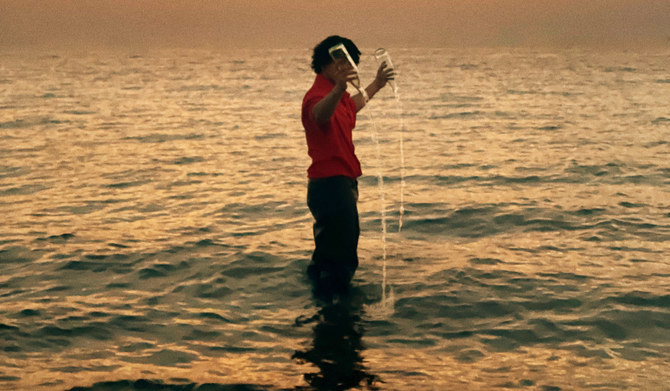
- Artist SOVL speaks on the challenges and joys of making music independently
RIYADH: As the music scene diversifies in Saudi Arabia, from psychedelic rock to electronic dance, young artist SOVL is bringing a new flavor to the mix.
SOVL is a self-taught independent musician who was on a quest to create a top-notch, industry-standard album on his own that reflected his personal artistry and carried a meaningful narrative. He platformed a distinct blend of alternative, modern, and indie rock, all rooted in the DNA of guitar music.
“As an independent musician, it’s a harder process than someone, say, signed to a label. But I try to take advantage of what I have,” he said.
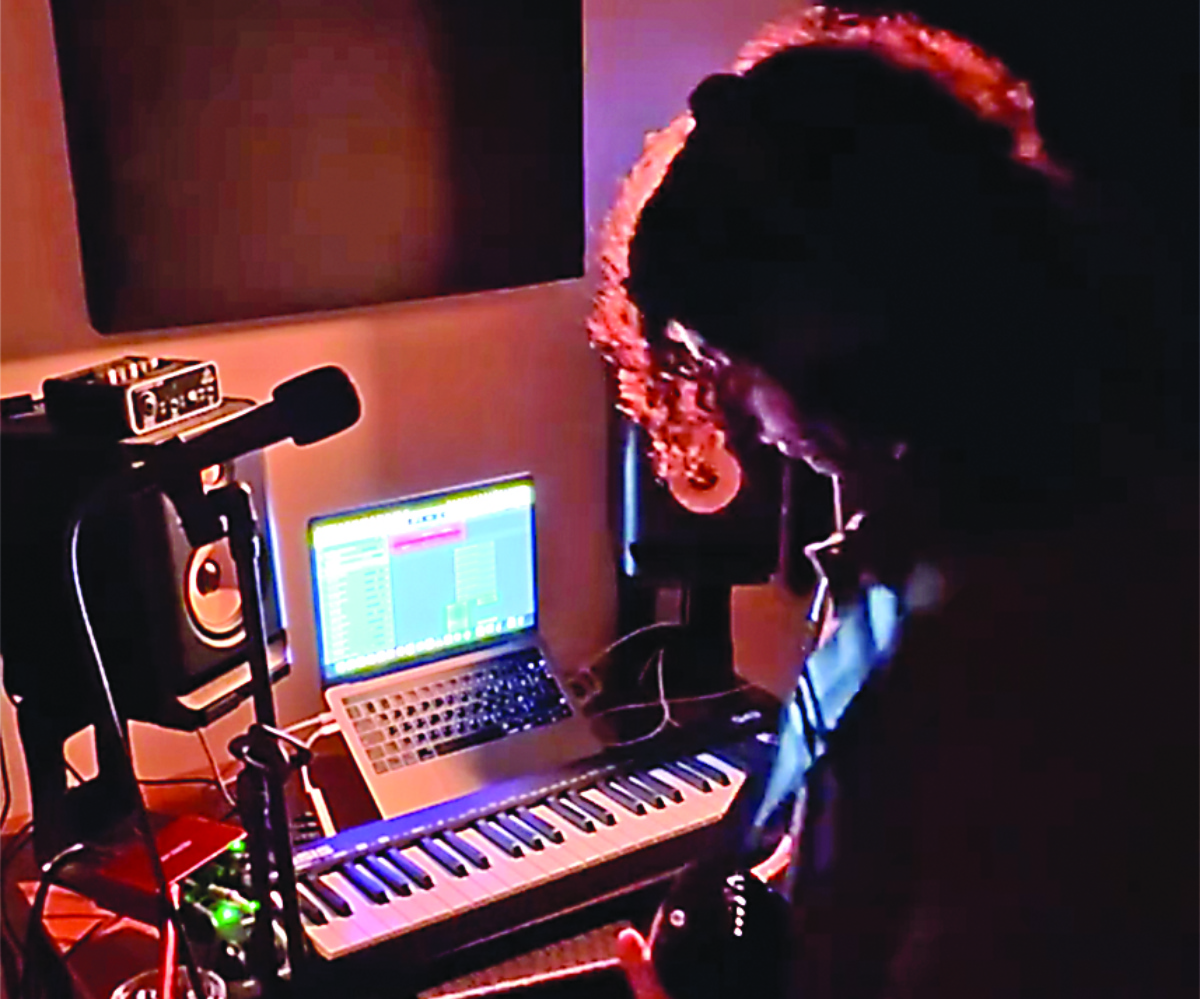
The Saudi rockstar, 22, debuted his first album “Too Much Is Not Enough” last December. The album represented a bold artistic leap as SOVL, a producer, songwriter, and singer, ventured into the captivating realm of full-length storytelling through his music.
The 10-track work is an emotional odyssey. Open to interpretation, the songs become a canvas upon which the listener’s own feelings are painted.
In a world where the pursuit of “too much” often takes center stage, “Too Much Is Not Enough” offers a message that resonates with all: In the pursuit of everything, we must not forget to preserve the most essential part of our being — ourselves.
I firmly believe that you can write and record music right from your own bedroom and doing so can make the final product more genuine, presenting your art exactly as you envision it.
SOVL, Saudi music artist
But before the full body of work came along, his journey was nothing but relentless.
“When I laid my hands on my first electric guitar in 2019, I was taking a different approach in learning the instrument,” he said. His technique was more makeshift than anything: placing his fingers wherever they landed or strumming whatever sounded right until he began learning some basics of guitar chord theory.
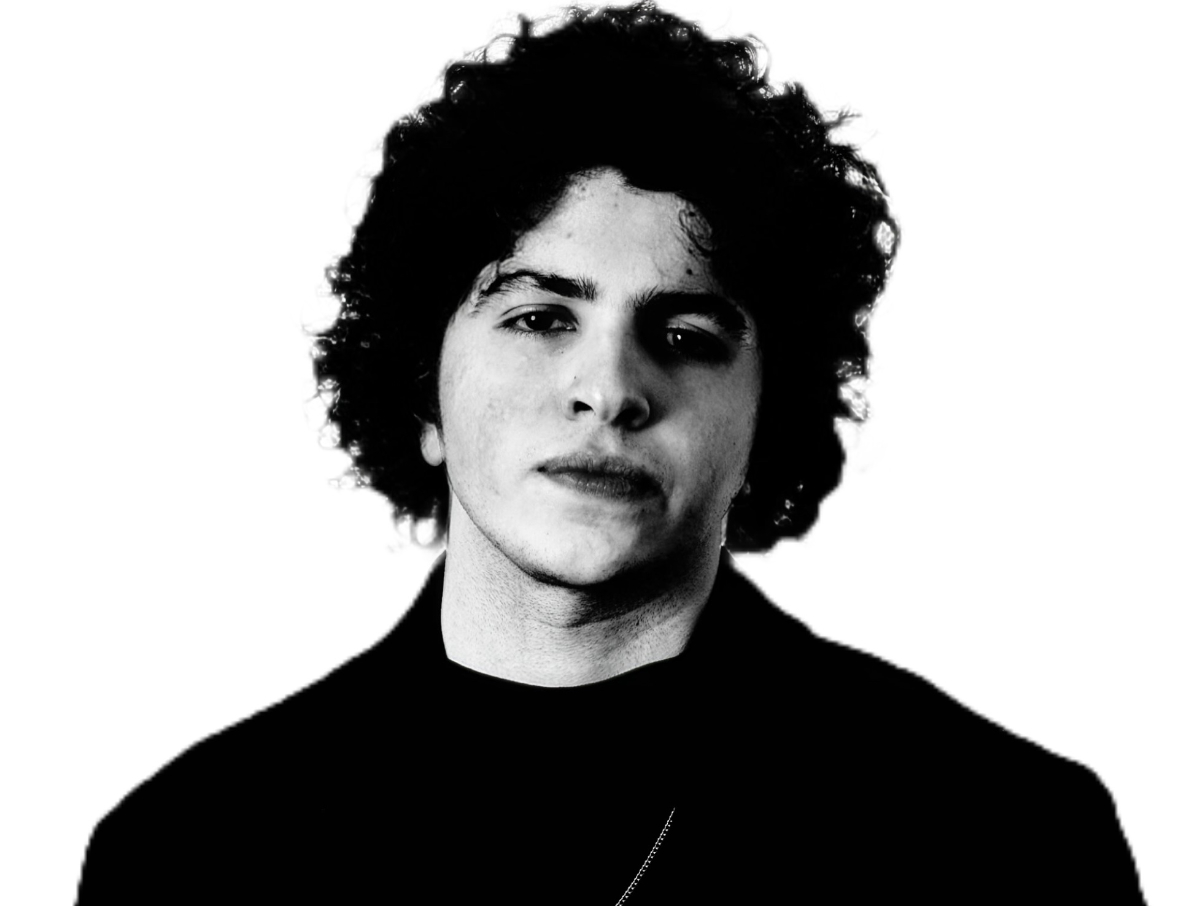
He later began recording his music on the beginner-friendly GarageBand before moving on to using the Logic Pro software and experimenting with different sounds.
SOVL released his single “What’s Going On?” in 2021, his first official launch into the local music scene as an indie alternative artist. The refreshing sound brings listeners back to the rock gems of the 70s like The Who and The Clash, who inspired much of his music.
He also tries to infuse a bit of Arabic spirit into his music; the oud instrument makes an appearance in some of his songs, including “Ana.”
While making music is the easy part, some other aspects of the industry like marketing and distribution can be difficult to tackle.
A record label, for example, would handle cover art, music video production, and music distribution. “It (would have) been much easier to sign with a record label so they could get all that sorted,” he said.
Regardless of the challenges, SOVL expressed his joy in having the freedom of creative direction: “I’m a strong advocate for the do-it-yourself approach. I firmly believe that you can write and record music right from your own bedroom and doing so can make the final product more genuine, presenting your art exactly as you envision it.
“Don’t get me wrong; there’s absolutely nothing wrong with signing to a major label,” he noted. “It’s a fantastic opportunity for those who have it. However, in a world flooded with too much music content, it can be challenging to stand out and get your unique sound heard.”
For his first album’s cover art, he enlisted the help of his friends. They took an impromptu one-day trip to the Eastern Province for the makeshift photoshoot and ended up filming one of his music videos there as well.
“It takes a whole lot of belief, and my friends have had my back since the get-go,” he said about the experience.
Many independent artists now are utilizing social media platforms like TikTok to promote their music, but SOVL says their approach is a bit “cliche” for his persona.
Personifying a rather mysterious image, hence the anonymous stage name, and presenting a style that is much more nuanced than generic pop, he allows his sound and lyrics to speak for themselves.
His album, although niche in genre, presents an exploration of a rather universal experience. He narrates the battle within to settle for what we already have. The theme is encapsulated in the album cover, which features the artist pouring water into an already plentiful and vast sea.
What distinguishes SOVL is his continuous pursuit to diversify not just genres but the very composition of albums in the novel Saudi music industry. Concept albums, which can tell a larger story than what could be contained in a single track, enhance the listeners’ experience of various notions.
SOVL is adamant about making and releasing music that is authenticated by genuine and soulful feelings, and his name serves as a reminder of that.
He said: “The album is super focused lyrically, on the theme, the sound, and some of the listeners criticized me on that point. Because it was my first album, (they believe) it should be a showcase of what you’re capable of, but on a broader aspect.
“With the Extended Edition, going forward, I’m going to broaden the sound, experiment a bit, but still with the same themes … It’s also to compel the story.”
While the writing and producing process is personal and self-centric, the product may not be everyone’s cup of tea, he said. Pop sensibility is not the artist’s goal, but he understands that broadening the scope of his work, even slightly, will create a more palatable experience for listeners to get into more psychedelic and grunge alternative rock.
“What I’m trying to do here is get people interested in different colors of music,” he said. “This is one that hasn’t been targeted yet here (in Saudi Arabia), but I’m really glad to try and start it.
“The scene here and the talents are still developing their musical identities … If you’re interested in music, just go for it. Once you start and find it’s really interesting, you’re maybe gifted, so try to invest more time on that,” he added.
SOVL’s goal is to prove, not only to himself but also to his friends and aspiring musicians, that artists can take an indie approach and still achieve their dreams in the world of music.
His album is out now on all popular streaming platforms.
Saudi artist seeks to beat limitations and transcend comfort zones
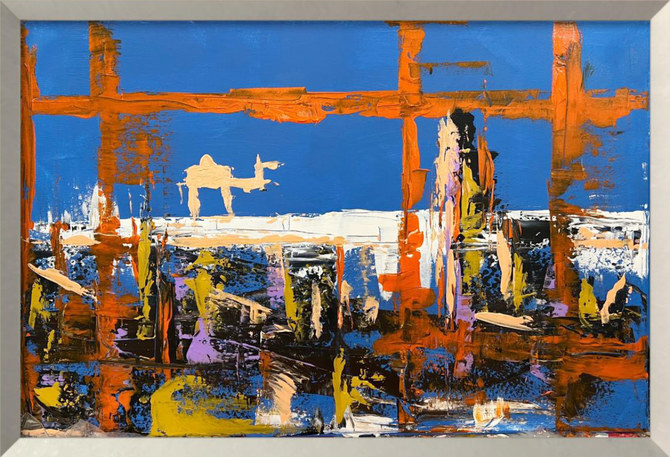
- Ali Alhammadi has been passionate about visual arts since childhood
JEDDAH: Ali Alhammadi, a Saudi 32-year-old visual artist from Aldawadmi in Riyadh, has carved out a remarkable pathway in the world of art since his professional debut in 2017.
Passionate about visual arts since childhood, Alhammadi’s artistic inspiration was ignited by the “Saudi renaissance” in line with Vision 2030, prompting him to embark on a creative expedition to express his perceptions through the canvas.
Alhammadi told Arab News that his art philosophy is about breaking invisible limitations and transcending comfort zones, drawing inspiration from the evergreen landscapes he encountered during camping trips with his father in the Riyadh desert.
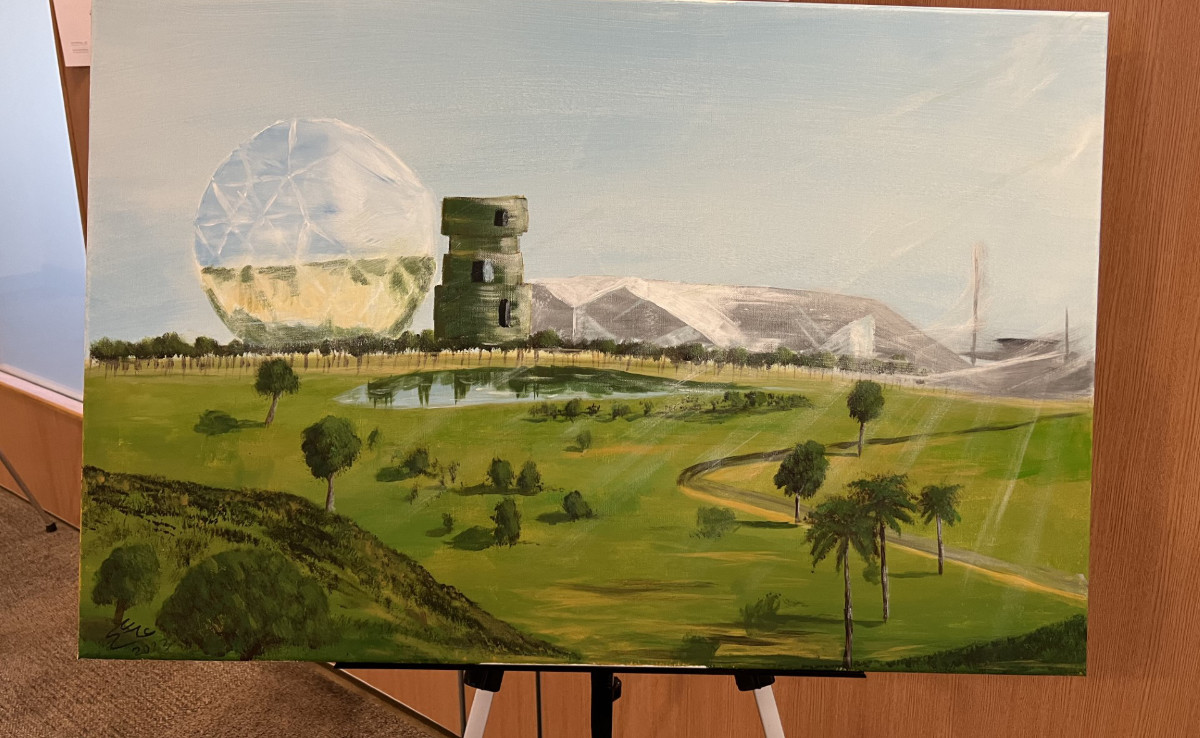
“During every spring season, me and my father used to go camping in the outskirts of Riyadh, when the desert turns green for a couple of months, where all the magical inspiration happens.”
Through his landscapes and abstract pieces, Alhammadi delves into his feelings, insecurities and aspirations, painting a narrative that speaks volumes.
“I use my art to express both happiness and sadness, and sometimes I start a painting with an idea in mind, but then I end up with a new one,” he said.

One of Alhammadi’s pioneering techniques, “Invisible Limitations,” challenges traditional conceptions and societal norms, symbolizing the potential within, and beyond self-imposed boundaries. He said that his work reflects a realization that limitations are merely illusions.
“Our comfort zone sometimes restricts our ability to be inspired and inspire others. That’s why I decided to paint the Invisible Limitations theme.
“As I matured, I realized that most of these limitations don’t exist ... our limitation is the sky.”
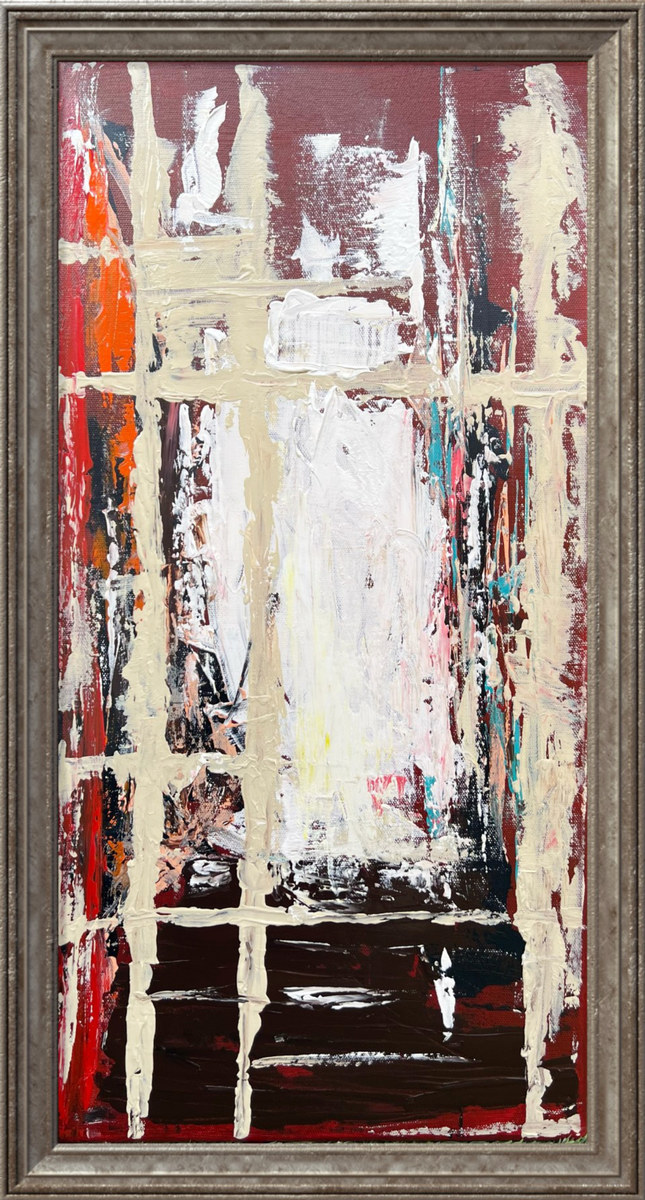
Alhammadi’s artistic evolution has been influenced by his participation in prestigious exhibitions such as The Stars Exhibition at the German Embassy in Saudi Arabia and the second Riyadh Season Exhibition.
These platforms not only showcased his talent but also provided a catalyst for his creative development, empowering him to delve deeper into his cultural roots while embracing global influences.
Navigating between diverse cultural landscapes, Alhammadi, based between Liverpool and Riyadh, seamlessly fuses vibrant hues and styles, blending Saudi heritage and international artistic trends.
His experiences abroad have expanded his artistic horizons, inspiring him to create artworks that resonate with a global audience while retaining a distinctive Saudi essence. “Now that I have found my theme and art style, I believe that this phase will take me to different phases in my professional art career,” he said.
Looking toward the future, Alhammadi envisions his artwork evolving to explore the intricacies of human and cultural relationships, going deeper into themes that resonate with universal emotions and experiences. “Human and cultural relationships is something I’m keen on expressing through art,” he said.
His participation in international and local events such as the Founding Day in Liverpool and the National Day in London has not only spotlighted his talent but also enriched his artistic narrative with a tapestry of diverse influences.
For aspiring visual artists embarking on their creative odyssey, Alhammadi offers this advice: “Stay true to your vision, embrace your unique style, and let your art tell your story.”
Saint Levant addresses Gaza war on stage at Coachella music festival

DUBAI: Saint Levant, a Palestinian French Algerian Serbian rapper, performed at the Coachella Valley Music and Arts Festival music festival in California on Saturday.
The musician used the opportunity to address the ongoing war in Gaza, saying: “Coachella, my name is Saint Levant and I was born in Jerusalem and raised in Gaza … as I hope all of you are aware, the people of Gaza have been undergoing a brutal, brutal genocide for the past six months. And the people of Palestine have been undergoing a brutal occupation for the past 75 years.”
Saint Levant performed a series of his hits, including “Nails,” “From Gaza, With Love” and a slowed-down version of “Very Few Friends.” The artist also performed “Deira” and “5am in Paris,” which was released last week.
“It’s about exile,” he said, describing the new song. “A feeling that us Palestinians know a bit too well.”
Born Marwan Abdelhamid in Jerusalem, the singer previously spoke to Arab News about his childhood.
“The actual cultural makeup is my mom is half-French and half-Algerian. My dad is Serbian, half-Palestinian. And they actually both grew up in Algeria. But they decided, in the early 90s, post the Oslo Accords, that Palestine was going to be free.
“So they went back, my dad went to live in Gaza in the early 1980s. And my dad actually built a hotel there and that’s where I grew up,” he said.
“For everyone, childhood is very meaningful. And for me, it was a juxtaposition because I remember the sound of the drones and the sounds of the bones. But more than anything, I remember the warmth, and the smell … and the taste of food and just the odd feeling of soil.”
Why the bidding may be furious for a portrait of Ottoman ruler Mehmed II, coming up for sale soon
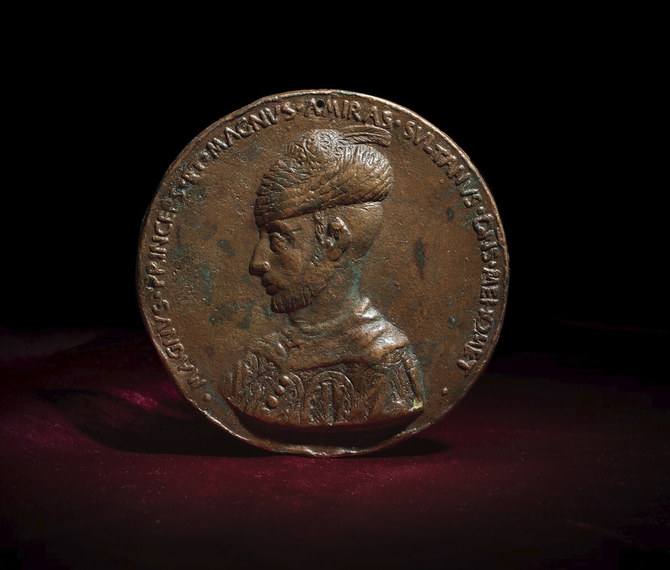
- The newly rediscovered medallion features a portrait of Sultan Mehmed II The Conqueror
- The item is expected to sell for around £2 million at auction at Bonhams of London
LONDON: To the Christians of Europe in the mid-15th century, the Islamic leader Mehmed II was “the terror of the world,” a “venomous dragon” at the head of “bloodthirsty hordes.”
The Roman Catholic Pope, Nicholas V, went even further. To him, the seventh ruler of the Ottoman Empire was nothing less than “the son of Satan, perdition and death.”
Understandably, Mehmed’s subjects felt rather differently about the man who between 1444 and 1481 would triple the size of the empire.
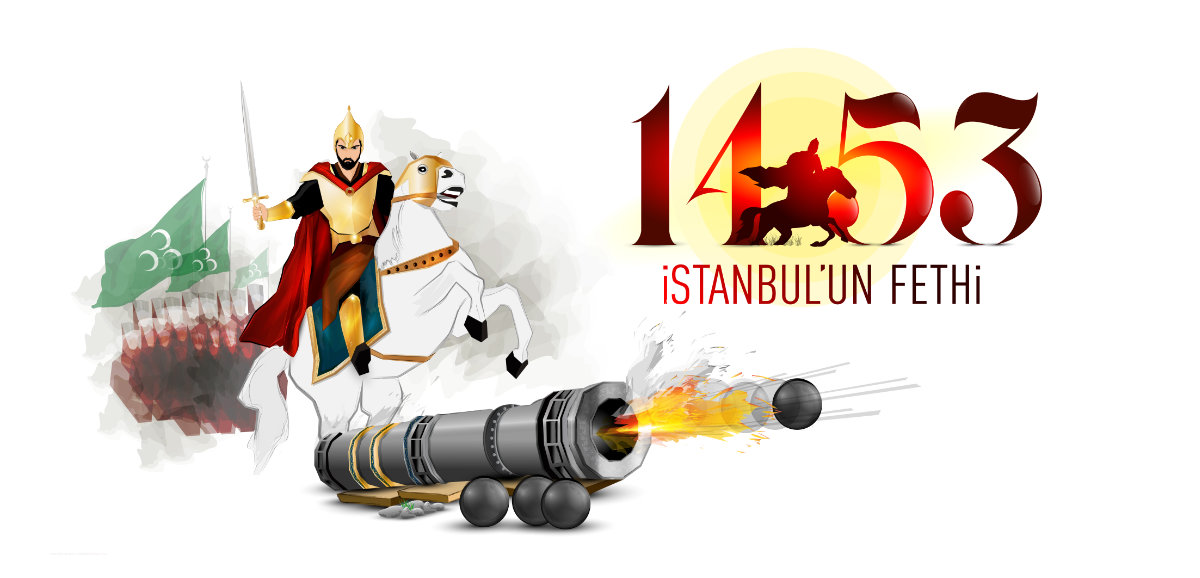
To them, he was “The Father of Conquest,” the man who in 1453, at the age of 21, achieved the impossible by capturing the supposedly impregnable fortress of Constantinople.
The single most strategically important city of the Middle Ages, Constantinople had been in Christian hands ever since its foundation in 330 AD by the Roman Emperor Constantine.
In modern-day Turkiye, Mehmed II is considered a hero by many. Symbolically, the Fatih Sultan Mehmet Bridge, which was completed in 1988 and links Europe and Asia across the Bosphorus Strait, bears his name.
Now, a unique and only recently rediscovered portrait of Mehmed the Conqueror, created an estimated three years before his most celebrated feat of arms, is coming up for sale at an auction at Bonhams of London, at which it is predicted to fetch as much as £2 million ($2.53 million).
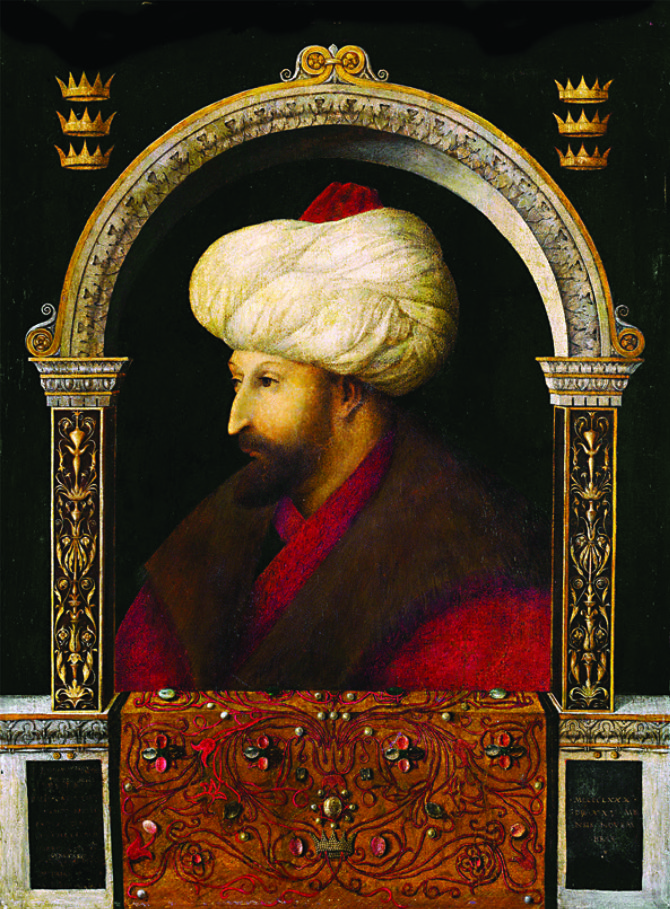
This is far from being the only known portrait of Mehmed; one of the most famous, painted by the Venetian artist Gentile Bellini in about 1480, can be seen at the National Gallery in London.
The uniqueness of the likeness on the bronze medallion is that it is not only the only known portrait of Mehmed II as a young man, pictured before he conquered Constantinople, but also the earliest known portrait of any Islamic ruler by a Western artist.
There is no date on the medal. But the clue to when the portrait was executed — almost certainly from life, by a skilled but anonymous Renaissance artist — lies in the Latin inscription, which reads: “Great Prince and Great Emir, Sultan Master Mehmet.”
Tellingly, said Oliver White, Bonhams’ head of Islamic and Indian art, “the inscription lacks the ‘Imperatorial’ title, which was included on medals after the fall of Constantinople.”
Experts have also concluded that, because of the absence of any design or lettering on the reverse of the brass medallion, plus the existence of a hole at its top, through which a chain might have been attached, it could well have been “a deeply personal and significant possession of the great Sultan.”
FASTFACTS
• Size of of Ottoman Empire would triple between 1444 and 1481.
• In 1453, at the age of 21, Mehmed II captured Constantinople.
• Mehmed II made further conquests before dying aged 49 in 1481 .
This, said White, suggests the intriguing possibility that it might once have hung around the neck of The Conqueror as a talisman. Indeed, in a later portrait Mehmed is depicted wearing what appears to be the very same medal.
“For us, the single most important historical element is that we believe that the medal belonged personally to Mehmed,” said White.
“You can also say it was almost certainly done from life, that it is a real portrait that actually looks like him rather than being a typical generic miniature painting of a sultan.”
Although the name of the artist remains unknown, “we do know that it was made in Italy, because that’s where all these pieces were being made at the time, when it was a fairly new thing.
“The whole concept of these portrait medallions, which had been resurrected from ancient Rome, had begun only about 20 years earlier, in the 1430s.”
Presenting the fall of Constantinople as an existential struggle between Christianity and Islam would be to simplify a complex situation, said White. There were Turks among the defenders of Constantinople, loyal to the Byzantine Emperor Constantine XI, and thousands of Christians among the 50,000-strong Ottoman army.
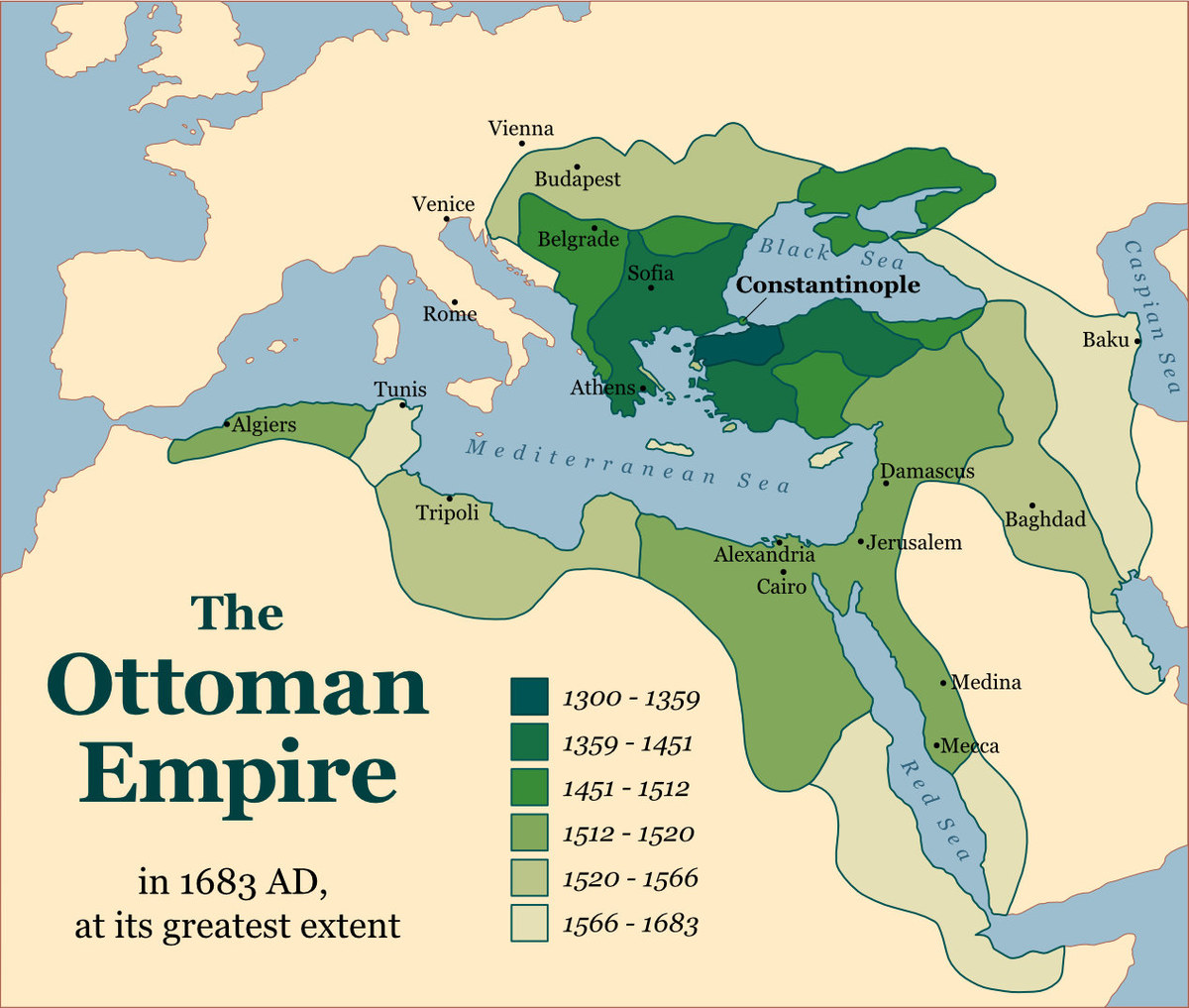
In a short biography commissioned by Bonhams, historian Peter Frankopan writes that despite the portrayal of Mehmed in contemporary European propaganda as a tyrant, in fact “the conquest of Constantinople was accompanied by a set of policies that even critics conceded showed a surprising degree of tolerance, most notably to the Greek Orthodox Christians who were protected from persecution by laws as well as by the sultan’s personal command — with similar concessions being given to Armenian Christians, to Jews and to other minorities in the city.”
Nevertheless, the fall of the city, “which had been the subject of lavish investment by the Roman Emperor Constantine and had stood for more than a millennium as the capital of the Roman Empire in the east — usually called the Byzantine Empire — sent shockwaves through the Mediterranean and beyond.
“Constantinople’s fall to Mehmed and his forces was not so much a dramatic moment as a decisive turning point in history.”
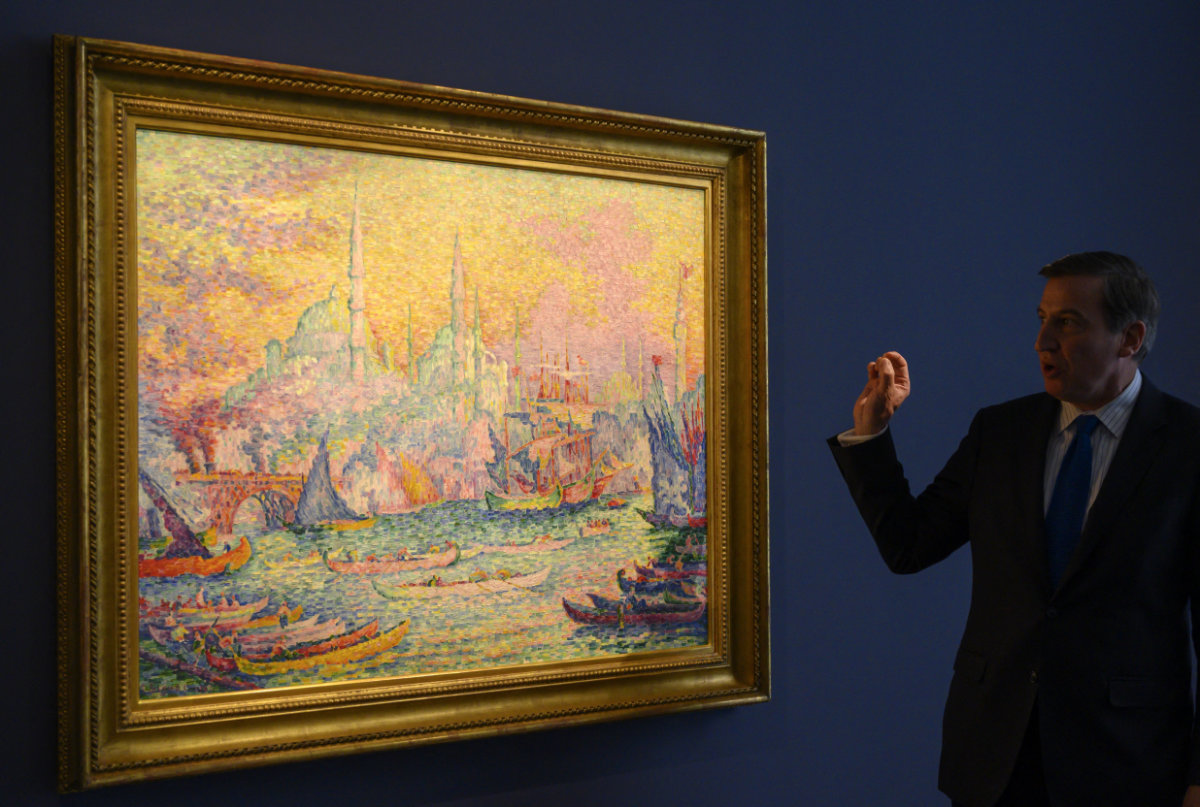
In fact, according to the Victorian British historian Lord Acton, modern history began “under the stress of the Ottoman conquest.”
In Acton’s view, wrote Frankopan, “the failure of Europeans to put their differences to one side, the reluctance of Christians in the west to support their Greek-speaking Orthodox neighbours to the east, and the ineffective response to the threat posed by Mehmed and his Muslim armies set off a chain reaction that ultimately helped shape the Reformation — if not the age of global empires that emerged from places such as Spain, Portugal, the Netherlands and Britain.”
It was, said White, “no exaggeration to say that the fall of Constantinople shaped the modern world — and it was with the eventual collapse of the Ottoman Empire in the early 20th century that many of the problems of the modern world arose.”
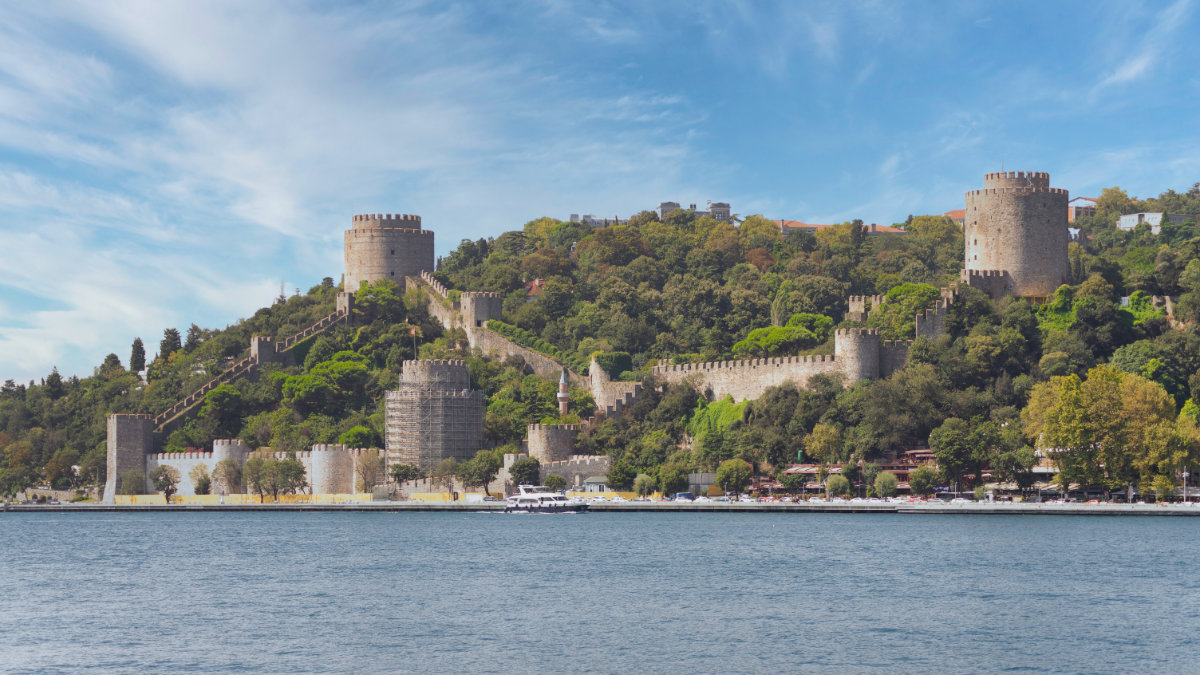
In his relatively brief life — he died at the age of 49 in 1481 — Mehmed achieved much, including a series of further conquests in Asia and Europe. But although he carved his way through much of the 15th century with a sword, he was a man of contradictions, introducing many political and social reforms at home and proving a great patron of the arts and sciences.
“He gathered Italian humanists and Greek scholars to his court,” said White, “and by the end of his reign had transformed Constantinople into a thriving imperial capital.”
Opinion
This section contains relevant reference points, placed in (Opinion field)
Although Mehmed commissioned many portraits of himself during his reign, executed in the Italian style, it is the rarity of the medallion that has invested it with such a high potential value.
“The medal was acquired by its present owner in an auction in Rome in 2000,” said White. “It was lumped in with a job lot of medals, and considered to be of very little importance.”
At the time no one quite understood its significance. A lot of academics have looked at it, and for seven or eight years after the original sale it was thought it might date to the 1460s, which was post-Constantinople and therefore less.”
Finally, it was realized that Mehmed had been referred to by the Latin title “Magnus princeps” only once before — in a treaty with Venice, drawn up in the 1440s.
In all portraits and references following the 53-day siege of 1453 he is referred to without exception as “The Conqueror of Constantinople.”
ALSO READ: Book by Saudi author unravels Ottoman atrocities in Madinah
The unnamed owner is now parting with the medal after the successful completion of two decades of research into its history.
“It’s been his baby for 25 years,” said White, “and I think he feels, ‘we know what it is now, and it's time for the public to enjoy it’.”
There is, of course, no guarantee that the medal will be purchased by an institution, said White. But the expected price and the historical significance of the piece in the story of Islam suggests at least “the possibility” that bidders will include some of the great museums of the Middle East.
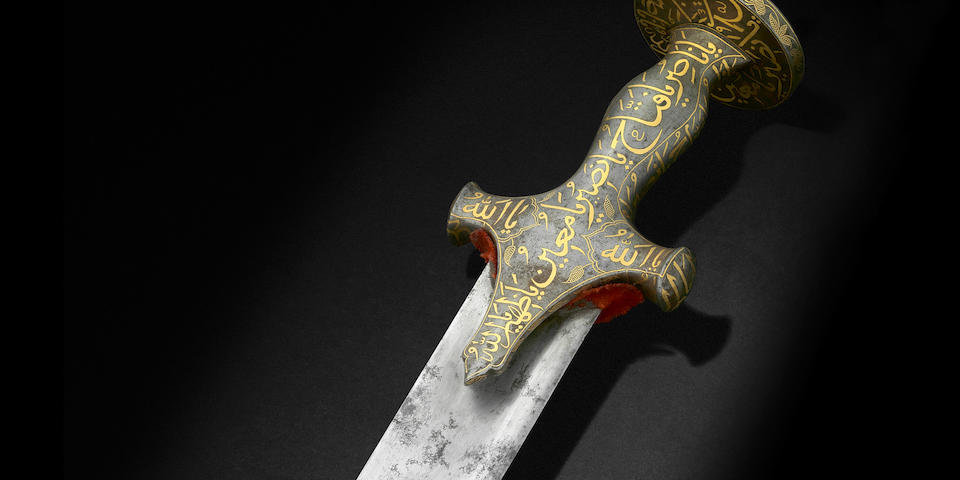
Bidding will have to be furious to beat the world record for an Islamic and Indian object, set by the sale in London last year of the sword of Tipu Sultan, ruler of the Kingdom of Mysore in southern India between 1782 and 1799, for £14 million.
The Mehmed medallion, estimated at between £1.5-2 million, will be the star lot at the Bonhams Islamic and Indian Art Sale on May 21 at Bonhams New Bond Street, London.
